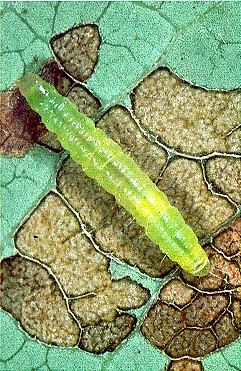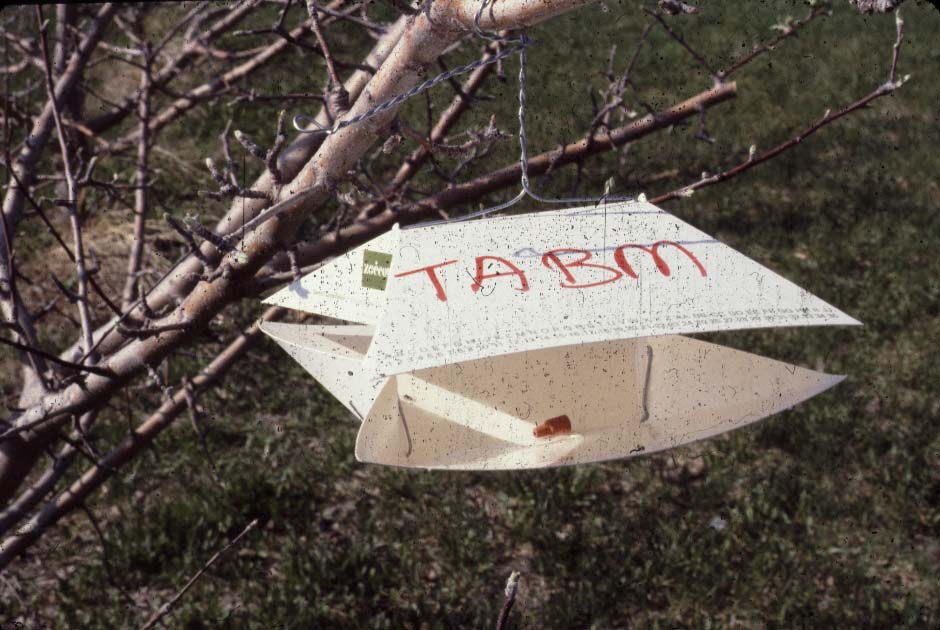The redbanded leafroller (Argyrotaenia velutinana) became an important apple pest after the introduction of DDT to control codling moths in the late 1940’s. Scientists believe this was due to the decrease in the abundance of its natural enemies. This pest is widely distributed throughout the Northeast, and fed on a wide range of woody and herbaceous plants. Now it is a minor pest (of apple) that rarely causes problems.
Description
The adult males and females are similar in shape, but differ in color pattern. The wing span of the adult ranges from ½” to 7⁄10”, with a color pattern ranging from cream, brownish-yellow to reddishbrown and black. The most striking feature is the reddish-brown band in the center of the forewings. When the wings are folded, there is a diamond-shaped marking on the back.
Eggs are found in oval-shaped masses colored a dull yellowishorange. The immature form (larva) of the redbanded leafroller is a small, green, unmarked caterpillar. Its color varies from ivory to green, depending on what it feeds on. The overall length of the caterpillar ranges from about ½” to 7⁄10”. The pupa is light green when first developed, but gradually darkens to a brown color. It is ¼” to ⅓” long.
Life Cycle
The redbanded leafroller overwinters as a pupa within folded leaves on the ground. Spring emergence of the adults begins at the early green tip stage of bud development and peaks at the tight cluster and pink stages. Adults are considered to be weak fliers, therefore most egg laying will be on the trunks and scaffold limbs of apple trees.
Egg laying starts soon after emergence and continues into bloom. An average egg mass contains 40-45 eggs. Incubation lasts from 14-21 days. Hatching begins as early as trees start to bloom, but usually peaks at petal fall.

Upon hatching, the larva immediately starts feeding, usually on water sprouts. As time passes, it feeds on developing apples. Larva development is completed in late June to mid-July, at which time the insect pupates. Adults begin to emerge 10-12 days after pupation. In New Hampshire, most fruit injury comes from this second generation, which lasts through August. The maturing larva spins a silken case using a leaf as a cover. The silk acts as an adhesive between the leaf and fruit. The larval feeding on the fruit is seldom very deep. By late September to early October, the larva falls to the ground and pupates in the leaf litter, where it spends winter.
Management
IPM Strategies:
- Monitoring - Pheromone traps can be used to catch the adult redbanded leafrollers. Use traps to determine when to monitor carefully for the larvae.
- Chemical Control - Redbanded leafrollers are primarily controlled by sprays directed at other insects, such as leafminers, plum curculios, and apple maggots.
- Biological control - A number of egg parasites have been found very effective, however they are eliminated when pesticides are applied in orchards. Guidelines for control of the redbanded leafroller are in the annually revised New England Tree Fruit Management Guide. Consult your county Agricultural Field Specialist for specific recommendations.

Download the resource for the complete factsheet.

